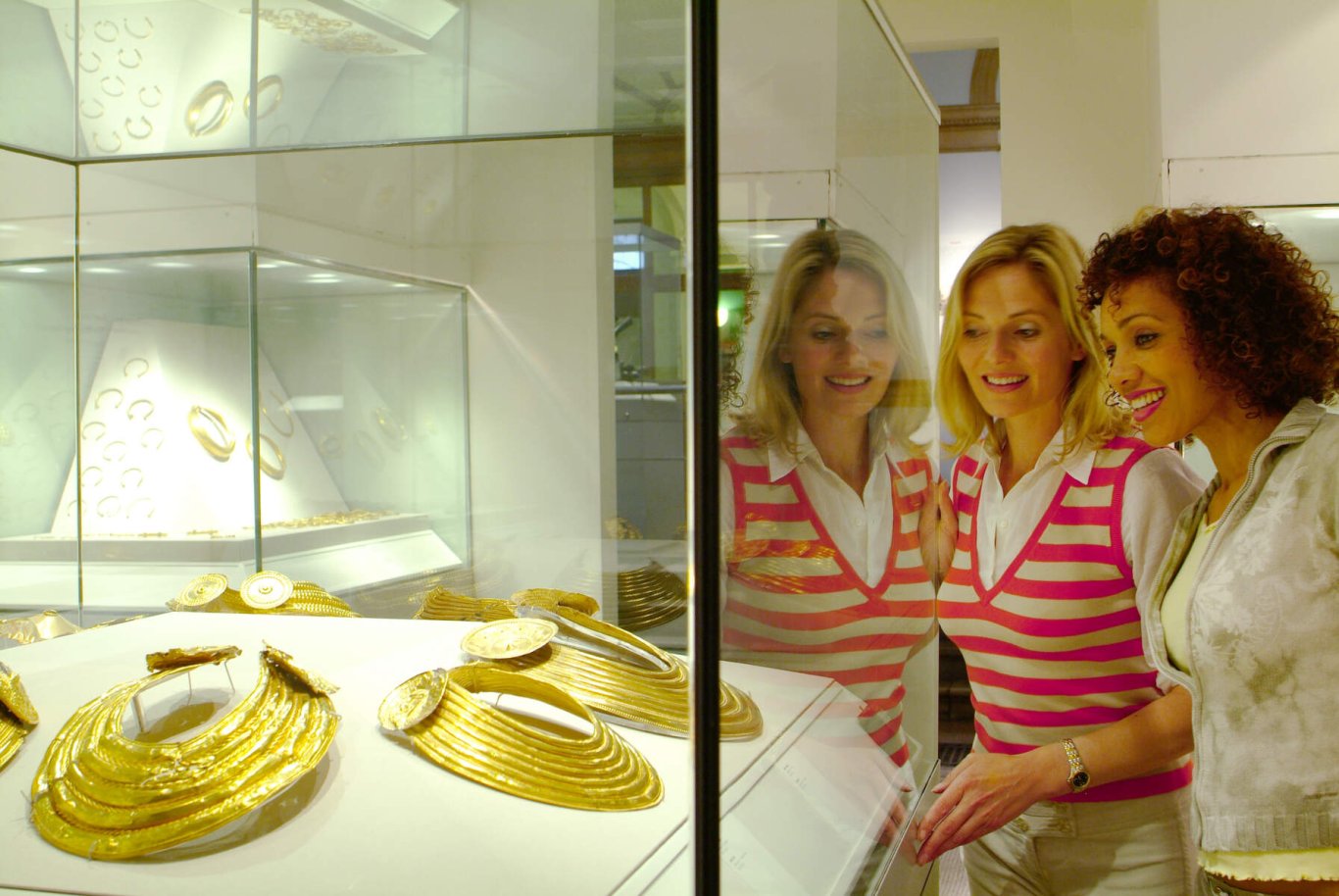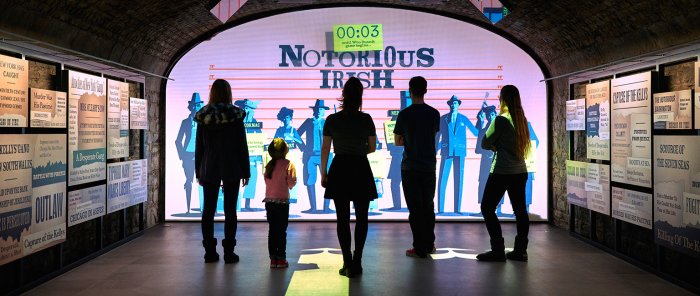Archaeological Museum of Ireland
The National Museum of Archaeology takes you back to 7,000BC. You can discover many artefacts such as Medieval and Viking items and artwork from both the Celtic and Medieval times
- The Archaeological Museum of Ireland is free to all visitors
- Open 1pm-5pm Monday & Sunday
- Open 10am-5pm Tuesday, Wednesday, Saturday
- Open 10am-8pm Thursday
- Specialises in Irish and other antiques dating from the Middle Ages all the way back to the Stone Age.
- The best way to see all free attractions all around the city is with the Hop-on Hop-off Bus Tour.
Archaeological Museum of Ireland
The Archaeological Museum of Ireland is located on Kildare Street which is only 4-min walk from National Gallery of Ireland.
The building of the museum itself has been compared with the Atles Museum in Berlin, designed by Karl Schinkel in the 19820s, because it was built in the Victorian Palladian style. At the entrance of the building there are columns that are made of marble that was quarried in counties such as Cork, Kilkenny, Galway, Limerick and Armagh. These columns are inside what is known as the rotunda which is domed and rises to a height of 20 metres. The original museum building was designed by two architects Thomas Newenham Deane and his son Thomas Manly Deane who were both from Cork.
Exhibitions
Ancient Egypt
The museum received a share of artefacts that were discovered during excavations of the Egypt Exploration Fund, sites included were Hieraconpolis, Ehnasya, Deir el-Bahri, Riqqa. Oxyrhynchus and Tarkhan.
The gilt and painted cartonage case of the mummy Tentdinebu dated to the 22nd Dynasty c. 945-716 BC is one of the most important objects in the exhibit. This mummy is of young boy and a boy said to be from Hawara dated to the first/second Century AD. The Egyptian collection has about three thousand objects and most of the excavations were carried out between the 1890s and the 1920s.
Ireland's Gold
In the Early Bronze Age, the gold products were made from sheet gold and this included lunulae which was crescentic gold collars and sun discs. The museums collection includes goldwork which is prehistoric and ranges between 2200 BC and 500 BC. The precise function of some of the goldwork is unknown but most are pieces of jewellery. During 1200 BC there was a variety of torcs made by twisting bars or strips of gold and these were new gold working techniques that had been developed. In around 900 BC which was the Late Bronze Age and this was the period where the likes of bracelets and dress-fasteners were made.

Medieval Ireland
There are three different galleries included in this exhibition, Power, Work and Prayer which basically reflected how society was back in medieval Ireland where it was divided between nobles, common people and clergy. The exhibition explores the different form of agricultural practices. The import trade in Ireland at the time was very big and you can see from excavations the various crafts and industries that were operating in towns. Shows a fine selection of the likes of books shrines, bell shrines and croziers and these were focused around religious practice and devotion. The Power gallery shows who ruled the medieval society and would include a fine display of late medieval swords and axes that would highlight why medieval Irish warfare was so unique. The Prayer gallery displays most of the surviving medieval Irish shrines and reliquaries which were mostly associated by Irish saints. Finally in the Work gallery this was focused on the non-noble society and the tools and products of medieval crafts and trades, both rural and urban.
There are many other exhibitions including Viking Exhibition, Prehistoric Ireland, Ceramics and Glass from ancient Cyprus and Kingship and Sacrifice.
How to get there and other free attractions!
- The Hop-on Hop-off Tour will drop you on Nassau Street which is right beside the Archaeological Museum of Ireland
- Also on Nassau Street is the National Library and Trinity College where the Book of Kells is located.
- In Merrion Square Upper is the Natural History Musuem and Leinster House.
- St. Stephen's Green and across the road is the Little Museum (free with a Hop-on Hop-off Ticket)
- At Cork Hill is Dublin Castle home to Chester Beatty Library
- At the Royal Hospital there is IMMA which is the Museum of Modern Art
- On Sarsfield Quay is the Decorative Arts and Hisotry Museum at Collins Barracks.
Make sure you visit the splendid Victorian toilets!


